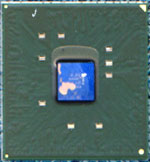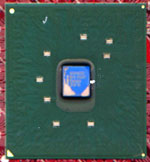Intel's New DDR Chipsets - 845E & 845G
by Anand Lal Shimpi on May 20, 2002 4:06 PM EST- Posted in
- CPUs
845G Graphics
As we mentioned at the start of this review Intel has finally introduced a completely new graphics core for use with the 845G and 845GL chipsets. Intel's first try at 3D graphics came with the i740 in 1997 and it received an update in 1999 with the i752. With the 845G Intel has designed a completely new core with a few interesting features.
For starters, although Intel likes calling their new graphics engine a DirectX 8.x solution the 845G 3D core features no programmable pipelines. On top of that, the core features no hardware T&L support either. The name of the game here is reducing die size to the point where the cost of including this new graphics core is minimal.
|
MCH
Size Comparison
|
|
 |
 |
|
845G
GMCH (left) vs 845E MCH(right) - Pictures are to scale
|
|
The low-cost nature of the graphics core is reiterated in the fact that it only has a single rendering pipeline running at 200MHz. It's important to note that even the NVIDIA MX line features two rendering pipelines but as you can probably guess for every pixel rendering pipeline you have to duplicate the number of texture coordinate generators and texture processing units. Having only a single rendering pipeline is actually something that Intel did even with the original i740 which ends up killing fill rate.
Luckily Intel has outfitted this single pipeline with the ability of processing four textures in a single pass. The ability to process many textures in a single pass is generally included to reduce memory bandwidth consumption (the more passes that are necessary, the more bandwidth is consumed) which outlines the second design goal Intel went for with the 845G core - efficient use of memory bandwidth.
Since this new graphics core would be used in SMA (shared memory architecture) setups conserving memory bandwidth is very important as every last bit of memory bandwidth that's taken up by the graphics is removed from the disposal of the CPU and the rest of the system.










0 Comments
View All Comments